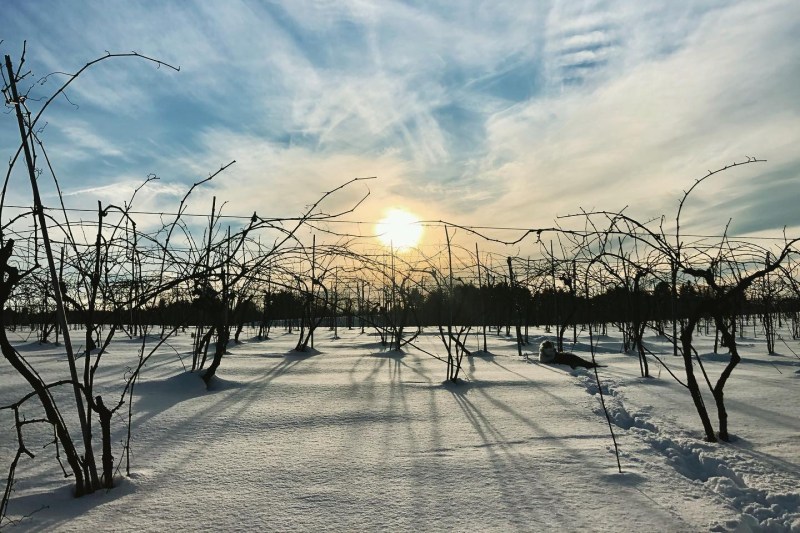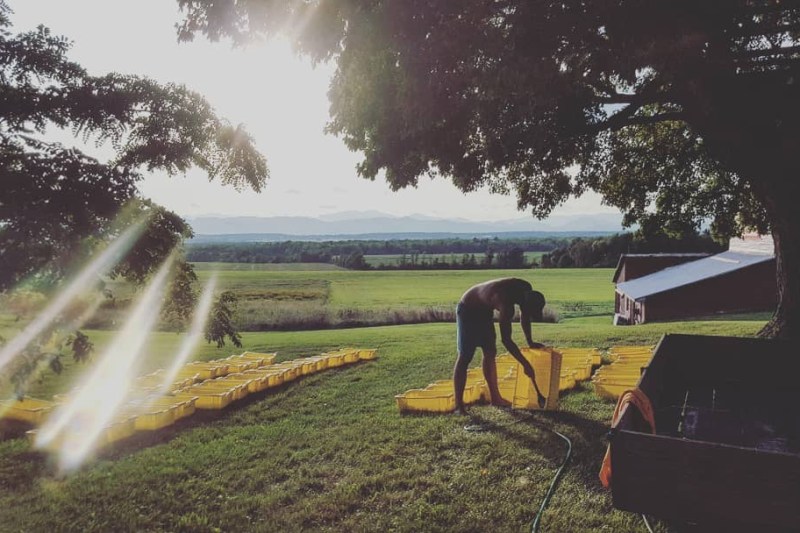As a warming planet reshapes the wine landscape and more people just look to try their hand at the craft, new pockets are emerging with more potential than ever. Vermont has become one of those pockets, a cool climate state with a burgeoning wine scene that’s worth tracking. Like Long Island and Virginia’s wine scene, it’s one of the most exciting wine realms on the east coast right now.
Vermont is yet another example of wine not just belonging to iconic spots on the map, like the Loire Valley or Sonoma. After all, we live in a world where England is making some of the best sparkling wine out there and high-elevation plots in places like Colorado are proving pretty solid for viticulture. All told, it’s an exciting time to be filling your wine glass.

As the sixth smallest state in the union, Vermont is far from large. But there’s enough going on here wine-wise that you’ll want to devote at least a weekend to it, should you be able to visit. Is Vermont the future of wine? It’s too early to tell. But it’s turning heads and starting to get some attention. It has a lot going for it—plenty of farming history, a collaborative environment, eager producers, and a new generation of winos that’s building off what was started here just a few decades ago. Sommeliers have long prized the lesser-to-completely unknown dots on the wine map and Vermont is very much one of those, at least for now.
Grape varieties
Harsh Vermont winters mean a lot of what was originally planted are hybrid grape species. These tough grapes tend to withstand the frigid conditions better, no to mention insect pressure and humidity. Increasingly, producers are toying around with vitis vinifera species, or, wine grapes you’re more likely to be familiar with. Popular species include reds such as Frontenac and Marquette and whites like Riesling and La Crescent. Expect to see more options as more hybrids are created in labs and more producers try their hands at cooler climate types like Chardonnay or Zweigelt.
How the wine is made in Vermont is of note too. The Green Mountain State has become something like the east coast headquarters for biodynamic and natural winemaking. While the scene remains small, it’s pretty collectively fastened to minimal intervention and sustainability.
History
The Vermont wine scene is just getting started. The first commercial winery opened here in the 1990s, meaning the industry is really just in its infancy. And, as a fertile place where lots of other fermentables are grown, it’s in the process of transitioning from a fruit winemaker (think blueberries, pears, etc.) to specializing in more traditional styles. So while drinks like ciders have been made here a long time, wine is relatively new, with folks really first dabbling in the stuff in the 1970s. Much of that early experimentation was done by Shleburne Vineyards founder Ken Albert.
The future is bright. Vermont producers are banding together to create the state’s first American Viticultural Area (AVA), which would champion the unique conditions here and their impact on the wines. There are well over 200 nationwide, including the Snake River Valley AVA in Idaho and the Red Mountain AVA in Washington state.
Tastemakers of note
About 20 wineries dot the Vermont countryside, with more expected soon. Here are a few to check out, whether you’re able to visit or find a few bottles online.

Shelburne Vineyards
One of the state’s oldest producers has become quite the draw, with big gatherings in the summer including live music events. Shelburne boats a big, barn-like venue with plenty of outdoor seating and great views. The wines are pulled from a trio of area vineyard sites and include noteworthy options like balanced blends, a stone fruit and subtly spice Marquette, and some refreshing Piquette releases.
Ellison Estate Vineyard
Easily one of the most intriguing outfits on the scene, Ellison launched in 2018 on an abandoned vineyard in Grand Isle. The wines are unique and made naturally, offering a real reflection of the Lake Champlain surroundings. There are great pet-nat wines, experimental one-offs, and a host of savvy co-fermented blends incorporating g little-known grapes like La Crescent, Prairie Star, Swenson, and Louise.
La Garagista Farm + Winery
Set centrally in Bethel, La Garagista is helping to shape the Vermont industry as well. The label has been creative and pioneering since its first vintage in 2010. Mixing it up in the cellar, you’ll find everything from whole cluster wines and native yeast-fermented wines to ciders and collaborations. You’re likely to fall for something you’ve never heard of, like a skin-fermented white made from the Brianna white grape.
Stella14 Wines
With a tasting room in Jeffersonville, Stella14 focuses on natural wines that are lively, light, and often fruity. The label got its start in 2020, jumpstarted by Master Sommelier David Keck. Keep this one on your radar as Vermont continues to feel out its niche in the American winemaking circuit.
ZAFA
A wine offshoot of sorts, ZAFA loves to throw on the experimentation hat and get to work. The label makes carbonated fruit wines made from a combination of wine grapes and local produce like peaches and apples. They tend to sell out fast so stay tuned to the website for release and all the latest from the Isle La Motte-based operation. In addition to being woman-owned and practitioners of regenerative farming, ZAFA is also all about innovative (and delicious) drinks and treating its staff equitably.
It’s not just wine of course. Beer fans know about the many merits of Vermont, from icons like The Alchemist in Stowe to Lawson’s Finest Liquids. There’s also great cider, from producers like Puckerbrush and many, many more. One of the biggest joys of the region is the farm lifestyle so while you should focus on the emerging wines, don’t shy away from the many fresh produce stands and makers who focus on other things (often in addition to wine), like mead.
If you go
With Vermont being pretty petite, it’s pretty easy to stay in one of the bigger towns like Burlington and still have access to wineries just a car ride away. If you prefer to stay somewhere more bucolic, consider The Inn at Shelburne Farms or the stunning Woodstock Inn & Resort. Some remote establishments, like Autumn Mountain Winery, offer cabins and even some camp spots during certain times of the year.
Editors' Recommendations
- How to make the Aviation cocktail, a drink almost lost to history
- The best Belgian beers you can find everywhere
- Healthy grilling ideas: These foods will have you feeling great all summer long
- How to make an Old Fashioned cocktail the right way
- Drink up at these amazing bars — they’re favorites of famous authors


